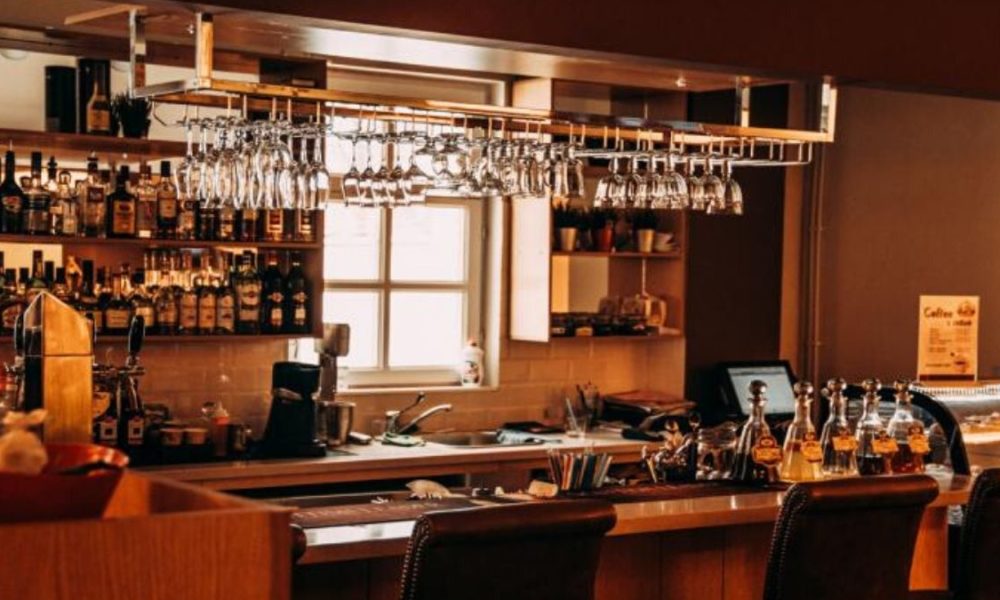The restaurant industry is a vibrant and highly competitive landscape, where success hinges not only on delectable dishes and exceptional service but also on creating an unforgettable dining experience. In this pursuit, restaurant furniture plays a pivotal role, in influencing customer perception, ambiance, and overall satisfaction. While many restaurateurs may be tempted to opt for cheaper furniture options to cut costs, investing in high-quality restaurant furniture can yield significant long-term benefits.
The Impact of Restaurant Furniture on Customer Perception
First Impressions and Atmosphere
When patrons enter a restaurant, the ambiance sets the tone for their entire dining experience. Restaurant furniture, with its visual appeal and comfort, contributes significantly to creating a welcoming and pleasant atmosphere. Well-designed and thoughtfully arranged furniture can evoke positive emotions, making customers feel at ease and enhancing their overall dining experience.
Influence on Customer Perception of Food Quality and Service
Surprisingly, restaurant furniture can subconsciously influence how customers perceive the quality of food and service. High-quality, aesthetically pleasing furniture can enhance a restaurant’s image, giving the impression of attention to detail and a commitment to excellence in all aspects of the dining experience. On the contrary, shabby or uncomfortable furniture may inadvertently lead diners to question the restaurant’s overall standards.
Importance of Cohesive Interior Design
Restaurant furniture is not merely an assemblage of tables and chairs; it is an integral part of the overall interior design. Cohesion in design ensures that furniture complements the restaurant’s theme, reinforcing its identity and leaving a lasting impression on customers. Investing in furniture that aligns with the restaurant’s brand and style enhances its uniqueness and distinguishes it from competitors.
The Financial Benefits of Durability
Analyzing the Initial Investment
While high-quality restaurant furniture may require a higher initial investment compared to cheaper alternatives, it is essential to consider the long-term cost-effectiveness. The durability of premium furniture means it can withstand heavy usage and retain its appeal for extended periods, ultimately proving more cost-effective over time.
Reduced Need for Frequent Replacements
In contrast to lower-quality options, durable restaurant furniture experiences less wear and tear and has a longer lifespan. By investing in robust furniture, restaurateurs can avoid the frequent replacement costs associated with cheaper alternatives, saving significant amounts in the long run.
Positive Impact on the Bottom Line
Although the upfront cost of high-quality furniture may seem higher, the positive impact on the restaurant’s bottom line is undeniable. Satisfied customers are more likely to return and recommend the establishment to others, leading to increased footfall and revenue.
Factors to Consider When Choosing High-Quality Furniture
Materials: Comparing Durability and Aesthetics
One of the critical factors in selecting restaurant furniture is the choice of materials. Different materials, such as wood, metal, plastic, and upholstery, offer varying levels of durability and aesthetics. While wood exudes warmth and charm, metal provides modernity and durability. Upholstered furniture offers comfort but requires maintenance to retain its allure.
Construction: Solid Craftsmanship and Robust Joints
The construction of restaurant furniture is a crucial aspect of its durability. High-quality furniture is crafted with attention to detail, ensuring sturdy joints and reliable construction. Opting for well-built furniture prevents premature damage and ensures the furniture can withstand heavy daily use.
Comfort and Ergonomics: Prioritizing Customer Satisfaction
Comfortable seating is paramount to ensuring a positive dining experience. Ergonomically designed furniture not only provides comfort but also encourages patrons to linger and enjoy their meals. When customers feel at ease, they are more likely to savor their time, leading to increased customer satisfaction and potentially longer stays.
Customization: Reflecting Brand Identity
Investing in customizable restaurant furniture enables the establishment to create a unique environment that aligns with its brand identity. Customization options allow for the integration of the restaurant’s color scheme, logo, and other distinctive elements, strengthening brand recognition and customer loyalty.
The Environmental Aspect: Sustainability and Responsibility
Eco-friendly Materials and Practices
In an increasingly environmentally conscious world, customers appreciate establishments that prioritize sustainability. Choosing furniture made from eco-friendly materials and supporting manufacturers with sustainable practices not only reduces the restaurant’s carbon footprint but also resonates positively with environmentally conscious diners.
Energy-efficient Production Methods
Beyond the choice of materials, it is vital to consider the manufacturing processes used by furniture suppliers. Working with manufacturers that employ energy-efficient production methods further supports the restaurant’s commitment to environmental responsibility.
Green Certifications and Customer Perception
Obtaining relevant green certifications demonstrates the restaurant’s commitment to sustainability and environmental responsibility. These certifications can also influence customer perception, attracting eco-conscious diners who value environmentally friendly businesses.
The Role of Restaurant Furniture in Safety and Compliance
Meeting Safety Regulations and Industry Standards
Safety is of utmost importance in any establishment, especially in a restaurant where customers and staff interact closely with furniture. Investing in furniture that meets safety regulations and industry standards ensures a safe dining environment and reduces the risk of accidents or injuries.
Ensuring Furniture Durability for Customer Safety
Durable furniture not only enhances customer comfort but also ensures their safety. High-quality materials and construction reduce the likelihood of furniture malfunctioning or breaking, minimizing potential hazards to customers.
Legal Implications of Non-compliance
Non-compliance with safety regulations can result in legal liabilities and damage the restaurant’s reputation. Customers may perceive the restaurant as irresponsible and unsafe, leading to a loss of trust and a negative impact on patronage.
Building Brand Reputation and Customer Loyalty
The Influence of Restaurant Furniture on Brand Image
Furniture plays a significant role in shaping a restaurant’s brand image. The design, quality, and overall aesthetic of the furniture communicate the restaurant’s identity and values to customers. A well-curated interior with high-quality furniture enhances the restaurant’s reputation and reinforces its unique selling proposition.
Creating Memorable Experiences through Thoughtful Furniture Selection
Unforgettable dining experiences often result from the harmony of various elements, including the restaurant’s cuisine, service, and ambiance. Thoughtful furniture selection, tailored to the target audience and concept, adds an extra layer of memorable experiences for customers.
Leveraging Social Media and Customer Reviews
In today’s digital age, customers actively share their dining experiences on social media platforms and review websites. Positive comments about the restaurant’s ambiance, including its furniture, can attract new customers and foster loyalty among existing patrons.
How to Make the Right Investment
Setting a Budget and Cost-Benefit Analysis
Before embarking on furniture procurement, establishing a reasonable budget and conducting a cost-benefit analysis ensures that the investment aligns with the restaurant’s financial goals and growth plans.
Identifying Reputable Suppliers and Manufacturers
Working with reputable furniture suppliers and manufacturers is essential to ensure the delivery of high-quality products that meet the restaurant’s requirements. Reading reviews and seeking referrals from other restaurateurs can aid in making informed decisions.
Seeking Professional Interior Design Advice
Collaborating with professional interior designers can provide valuable insights into the restaurant’s design and furniture selection. Designers can help create a cohesive and aesthetically pleasing environment that resonates with the restaurant’s target audience.
Future Trends in Restaurant Furniture: Adapting to Changing Customer Preferences
Forecasting Emerging Furniture Design Trends
As customer preferences evolve, so do furniture design trends in the restaurant industry. Staying abreast of emerging trends can help restaurateurs maintain a fresh and relevant ambiance that appeals to modern patrons.
The Impact of Technology Integration
Innovative technologies are increasingly being integrated into restaurant furniture to enhance customer experience. Features such as wireless charging, interactive menus, and smart lighting can add a futuristic touch to the dining experience.
Balancing Timeless Appeal with Contemporary Aesthetics
While staying current with trends is essential, it is equally crucial to strike a balance between timeless appeal and contemporary aesthetics. This approach ensures that the restaurant’s ambiance remains relevant and welcoming to a diverse range of customers.
In conclusion, investing in high-quality restaurant furniture is a strategic decision that can significantly impact the success of an establishment. By understanding the influence of furniture on customer perception, financial benefits, and brand reputation, restaurateurs can make informed choices that resonate with their target audience. Prioritizing durability, sustainability, and customer comfort will not only lead to long-term cost savings but also foster a loyal customer base and elevate the restaurant’s standing in the competitive culinary world.























